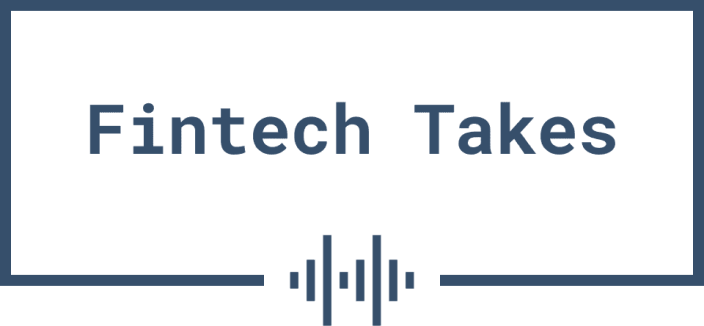
3 Fintech News Stories
#1: Blocking and Tackling
What happened?
Block reported its Q4 2024 numbers, and stock market analysts weren’t thrilled:
Results for the fourth quarter ended Dec. 31 were mixed, hitting a sour note with investors. Revenue came in at $6.03 billion, an increase of 4.5% year over year but below analysts estimates of $6.26 billion, according to S&P Capital IQ. GAAP net income, meanwhile, landed at $1.95 billion, or $3.05 per share, above analysts’ consensus of $252.38 million, or 41 cents per share. Adjusted EPS hit 71 cents per share, under analysts’ expected 87 cents per share.
Investors weren’t impressed. Block’s stock was trading down nearly 7% in after hours trading on Thursday evening and was down 11% to $74.01 per share when markets opened in New York Friday morning.
So what?
Jevgenijs Kazanins, author of the wonderful Popular Fintech newsletter, wrote a great breakdown of Block’s Q4 earnings and plans for 2025, which I would encourage you to read.
As Jev points out, Jack Dorsey’s continued fascination with open-source software, crypto mining hardware, and non-custodial wallets is a lot less cute when Block is undershooting analysts’ revenue expectations and seeing decelerating growth in gross profit across both Square and Cash App.
So, what’s the plan for getting Block back on track?
Well, on the Square side, the plan is to go after larger merchants (what Square calls mid-market sellers, which are businesses that process more than $500,000 in gross payment volume per year), with a special focus on restaurants and retailers. Square is investing heavily in this segment by hiring a dedicated field sales team and building new product features specifically for these merchants.
Sounds great in theory, but I have my doubts that Square will be able to outcompete more focused competitors like Toast on product innovation, which puts a lot of pressure on that field sales team.
On the Cash App side, it seems like the plan is to shift focus away from growth (Cash App monthly active users has been stuck at 57 million for more than a year) and toward profitability, which means lending.
Cash App already does quite a bit of lending through its cash advance service (Cash App Borrow). In December of 2024, the service reached 5 million monthly active users, and in all of 2024, Cash App Borrow originated nearly $9 billion in loans.
According to Block’s CFO, the company plans to lend to additional customers and offer higher limits while integrating the Borrow product with Direct Deposit (TBH, I’m not sure what that last part means). Block has also integrated Afterpay (its BNPL service) with its Cash App Card. Here’s Jev:
Block is finally moving forward with integrating Afterpay into the Cash App ecosystem.
Thus, this month (February 2025), Block “began rolling out a new offering that integrates Afterpay with Cash App Card, enabling eligible customers to retroactively pay over time for their purchases.”
This is very ambitious, and I’ll be curious to see how it goes.
Integrating Afterpay into the Cash App Card sounds like Block’s answer to the Affirm hybrid debit/BNPL card, but, of course, the key difference is that Affirm tends to work with more affluent consumers with higher credit scores.
And Cash App Borrow sounds like it’s growing nicely, but how much room is there to expand without taking on excessive credit or compliance risk? There’s a reason why Chime, Varo, and Dave have all struggled (in different ways) to crack short-term lending for this segment of the market.
#2: The Problem With One Card to Rule Them All
What happened?
Mastercard announced a new offering:
The new Mastercard One Credential can let consumers choose debit, installments, prepaid or credit, the company said in a press release
Users can set their payment preferences online or in an app, according to the release.
They can set preferences based on transaction type and time, per the release. For example, users can specify their checking account for expenses under $100, their credit card for expenses over $100, and installments for occasional larger purchases.
So what?
This sounds like a carbon copy of Visa’s Flexible Credential, which was announced last year.
Makes sense, and it’s not at all surprising to me that Mastercard made this a priority. In an increasingly fractured and competitive market, the networks need to evolve beyond the simple card-product constructs of the past. A digital payments credential that can dynamically and intelligently draw from different funding mechanisms behind the scenes is a powerful unlock for financial services product developers.
The question is whether the product developers will take advantage of this capability.
Some have. Affirm uses Visa’s Flexible Credential for its Affirm Card, and my supposition is that it’s also being used to help power Affirm’s partnership with FIS, which allows other debit card issuers to create their own versions of the Affirm Card.
But what about larger Mastercard (and Visa) issuers? Will they really build dynamic and intelligent payments solutions using this new capability?
I have my doubts.
Creating a solution that empowers customers to use debit, credit, prepaid, and BNPL in the most optimal way possible might be great for the customers, but it would also be suboptimal for many of those individual payments products.
Using debit instead of credit for small dollar transactions might reduce the likelihood that a customer revolves a balance, but that is bad for the bank’s credit card division. Switching between two different credit cards based on the type of transaction might be good for the customer trying to maximize their rewards, but it will be more expensive for the bank and quite annoying for the executives in charge of those cards.
In my experience, if something is good for the customer but creates problems between the different product teams and lines of business at the bank, it won’t happen.
#3: Tipping in Fintech is Bullshit
What happened?
A breakthrough!
Dave Inc. … today announced the completion of changes to its optional “Tips” and instant transfer feature for using its ExtraCash service.
The optional fee model, which allowed members to access credit for as little as $0 per transaction, has been replaced with a simplified 5% fee structure including a $5 minimum and $15 cap. There will also be no additional fees incurred to instantly transfer funds from ExtraCash to Dave Checking accounts. Early testing of the new structure indicates positive member feedback and suggests enhancements to lifetime value, resulting in the company moving forward with the full member migration within the previously disclosed early 2025 timeline.
So what?
As one of the longest-tenured and most vocal critics of tipping as a business model in fintech, please give me just a moment to express my feelings about this news:
Fuck yes.
The defense of tipping in fintech always felt like trying to thread a very small needle. It goes something like this:
If a broad base of our customers consistently chooses to occasionally tip us a reasonable amount of money, then we will generate a reliable revenue stream without causing any negative or unfair outcomes for any specific segments of our customers or creating excessive compliance risk.
OK, sure, but what happens if any one of those things isn’t true?
What if it’s not a broad base of customers, but rather a specific segment? And what if that segment just happens to be heavily comprised of a protected class under ECOA?
What if some customers tip you every time or tip you very large amounts because they believe that doing so will increase their odds of being approved for a cash advance next time, even if you never explicitly tell them that?
What if the economy goes into recession, and a large chunk of your customers just decide to stop tipping you?
It’s just inherently problematic, even if you implement it perfectly (which the FTC did not think Dave did, based on its lawsuit against the fintech company late last year).
I have never had an objection to cash advance and earned wage access providers charging a small fee for instantly transferring the funds to the customer (this is a clear and easy-to-understand value exchange that helps to cover a fixed cost … not dissimilar to paying for an out-of-network ATM transaction), but Dave is getting rid of this too and moving to a simple 5% fee with a $5 minimum and $15 cap.
Good!
Just build a product people want and tell them how much it costs.
No more tipping in fintech!
2 Fintech Content Recommendations
#1: Yes, SVB (Is Processing ACH for Binance.US) (by Jason Mikula, Fintech Business Weekly) 📚
Some really good sleuthing by Jason in this one. The underlying structure here seems complex in a Synapse-y way, which is concerning.
#2: Navigating GENIUS (by Ben Milne) 📚
A good breakdown of the Guiding and Establishing National Innovation for U.S. Stablecoins (GENIUS) Act, which proposes to create a national regulatory framework for stablecoins in the U.S. … something that we very much need.
1 Question to Ponder
What evidence is there that Gen Zers are financially worse off than older generations were at their age? What evidence is there that Gen Zers are better off, financially, than their older counterparts were at their age?
Give me the data!


